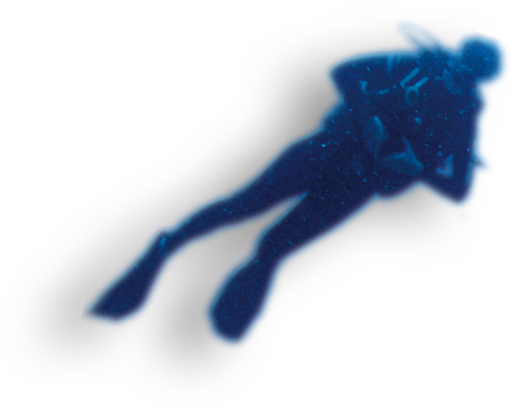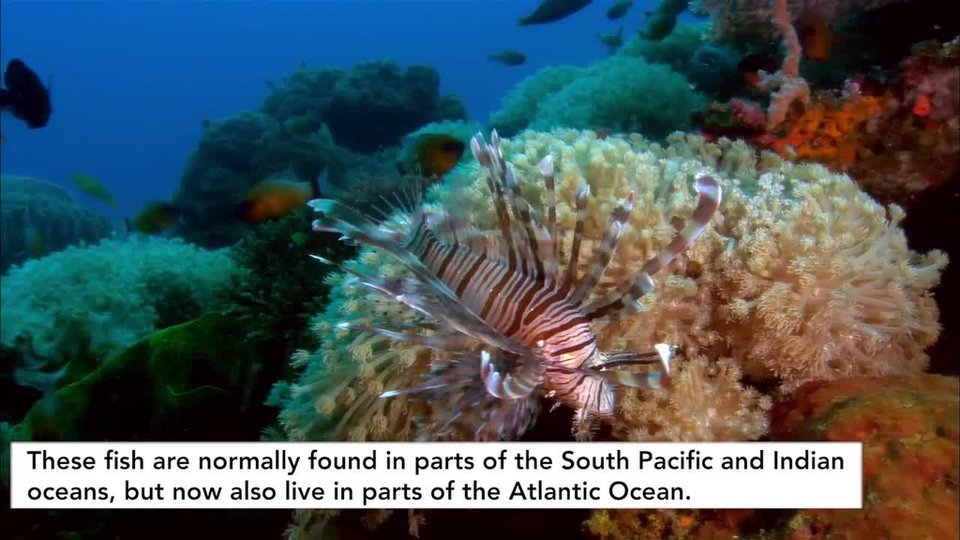TheoceanisadeeperhueofblueoffthecoastofFlorida.Thirtymeters(100feet)down,thewaterisclear.Thecolorsofthereefaredazzling.Nearanorangebarrelspongeisagroupoffish.Theyseemtohangmotionless.Theylooklikeaherdofzebras.Buttheirstripesarereddish‑brownand white.
Adiverappears.Heaimsaspeargunattheheadofthenearestfish.Hepullsthetriggerandstrikesthefish.Noneoftheotherfishmove.It’sasiftheyhadn’tnoticed.Thedivershovesthedeadfishintoapouch.Thenhetakesaim again.

AFishOut
ofItsWaters
Whywouldadiverkillalionfish?Becauselionfisharenotapartofthisenvironment.Theyareaninvasive species.Theyhurtthelocalfishpopulation.Theyhurtthereef, too.
LionfisharenativetotheSouthPacificandIndianoceans.There,theyliveinbalancewithothercreatures.IntheAtlanticOcean,lionfishhavenopredators,sothereisless balance.
GettingaFin‑hold
So…howdidtheselionfishgetintheAtlantic Ocean?Therearesomeinterestingtheories:Theyarrivedheretrappedinballasttanksofcargoships.Or,abreedingpairescapedfromanaquariumduringHurricane Andrew.
Mostlikely,tropicalfishownersdumpedtheirlionfishinthesea.Thiscanhappenoncethefishgettoobigfortheiraquariums.Thefirstreportoflionfishwasin1985.TheywerefoundoffthecoastofFlorida.Since2000,thepopulationhas exploded.




